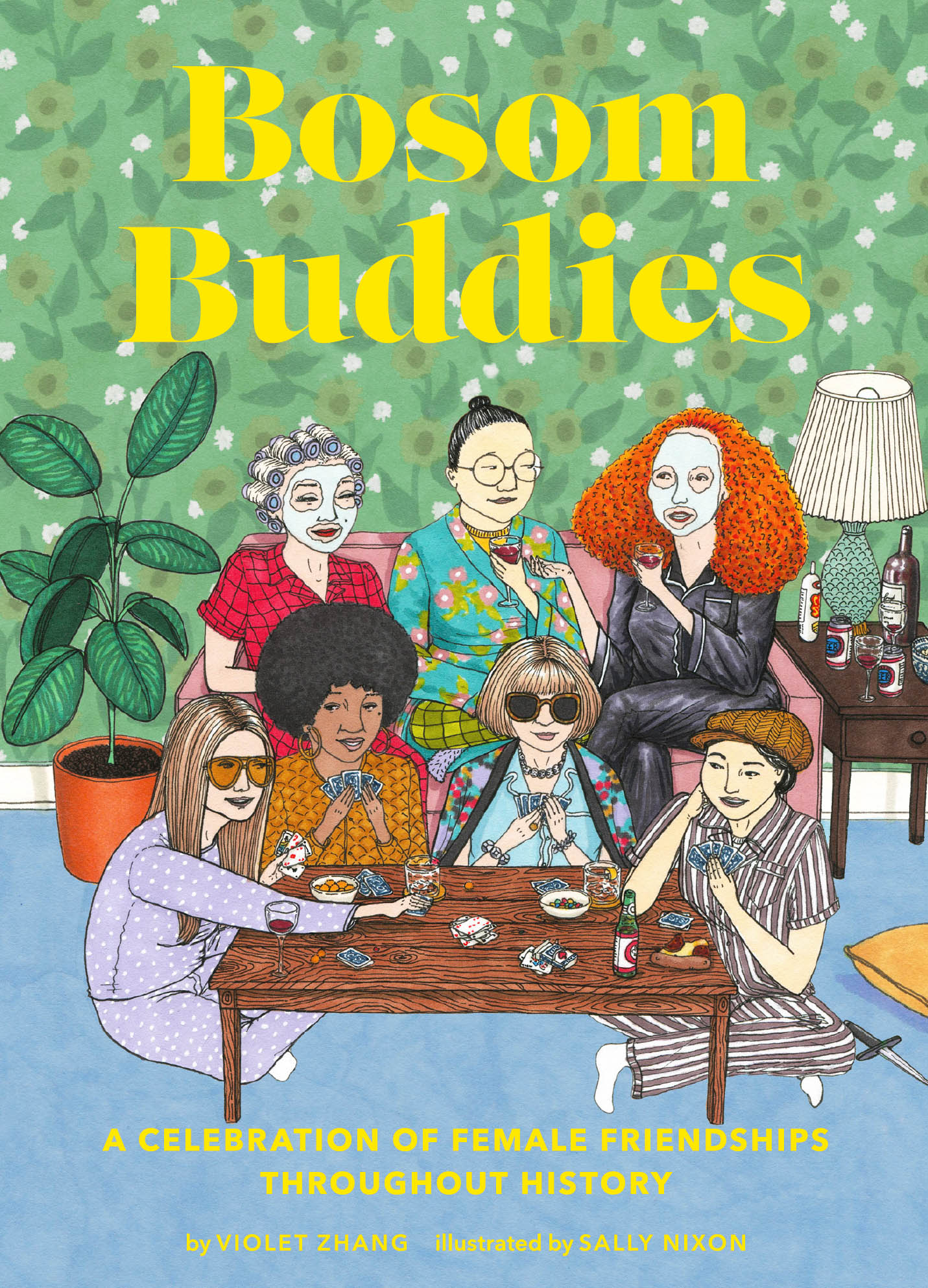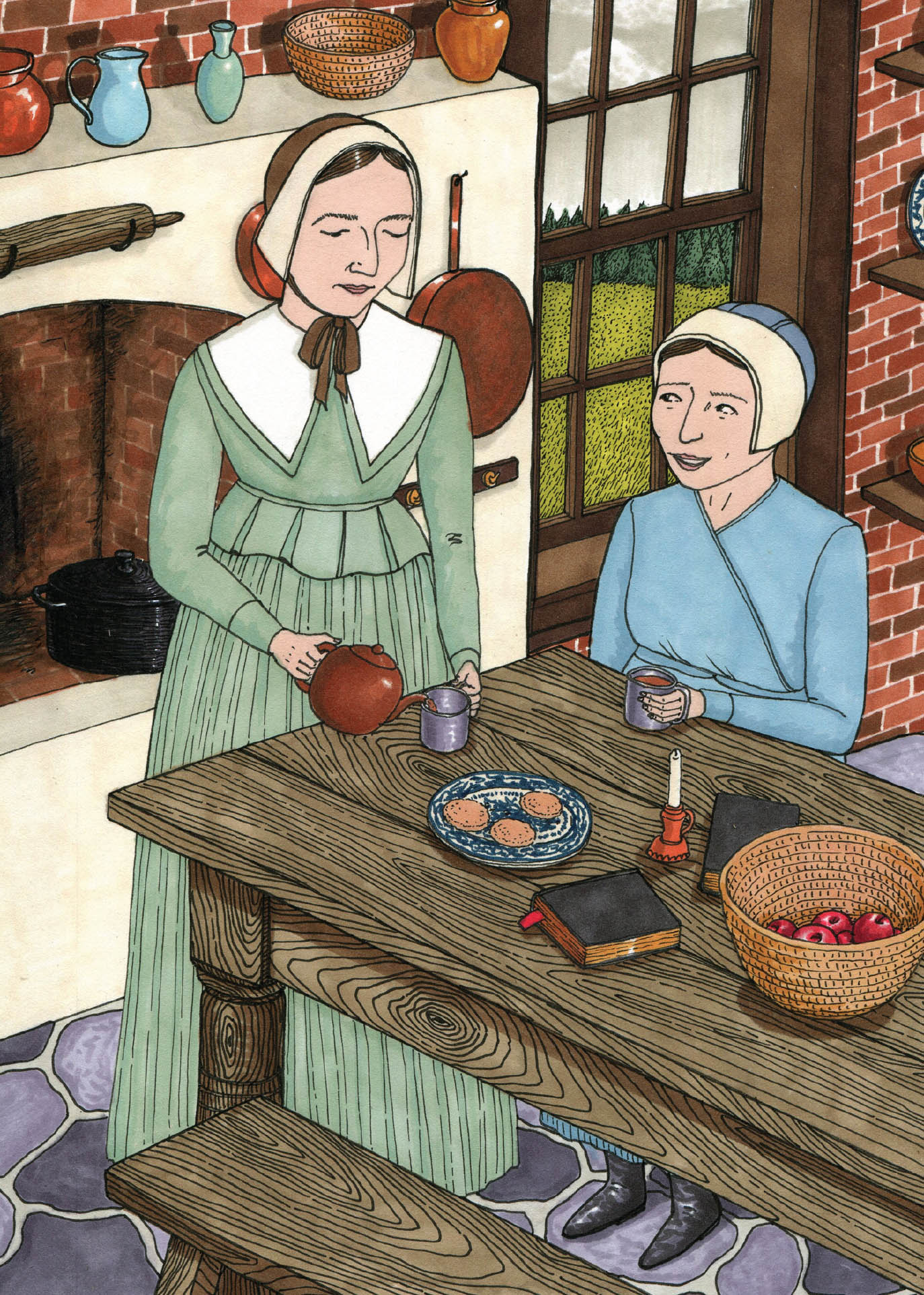

Text copyright 2018 by Chronicle Books LLC.
Illustrations copyright 2018 by Sally Nixon.
All rights reserved. No part of this book may be reproduced in any form without written permission from the publisher.
ISBN 978-1-4521-6845-6 (epub, mobi)
Library of Congress Cataloging-in-Publication data is available.
ISBN 978-1-4521-6839-5 (hardcover)
Design by Allison Weiner
Chronicle books and gifts are available at special quantity discounts to corporations, professional associations, literacy programs, and other organizations. For details and discount information, please contact our corporate/premiums department at or at 1-800-759-0190.
Chronicle Books LLC
680 Second Street
San Francisco, California 94107
www.chroniclebooks.com
My soul is walking as it often does alongside of your soul...
HARRIET BEECHER STOWE in her first letter to GEORGE ELIOT
Table of Contents
Introduction
The term bosom buddies, meaning best friends, originated in the sixteenth century. The bosom was, at the time, considered a symbol of thoughtfulness and deep feeling. So in turn, a bosom buddy (or a bosom friend, as they said back then) was someone with whom you could share all your most private thoughts; someone you were very attached to emotionally. Its this kind of intimacy that youll see in the friendships featured in this book.
From entertainment and sports to politics and activism, every woman in this book is the (s)hero of her own story, and worthy of her own praise. But, despite being spectacular as individuals, these leading ladies didnt do it alone; they had their besties beside them. Angela Davis and Toni Morrison merged literature and activism. Venus and Serena Williams took over the tennis world and crushed stereotypes about the game. Together, Qiu Jin and Xu Zihua, members of the Chinese literati during the Qing dynasty, rebelled against an unjust government. In times of stress and confusion, these women turned to one another for inspiration, advice, or simply comfort. They motivated each other to be better in their work, and stuck with one another through ups and downs, successes and failures.
Of course, these friendships werent all rainbows and sunshine and butterflies. (What friendship is?!) Like any serious relationship, there was often tension and conflictand in some cases even rivalry. Tennis idols Martina Navratilova and Chris Evert were best friends in their personal lives, but they destroyed each other on the court. Virginia Woolf and Katherine Mansfield connected on their writing, but were also deeply envious of one another. Zora Neale Hurston and Marjorie Kinnan Rawlings respected each other as writers, but their relationship was tainted by the racial prejudices of their time. This book explores those complicated aspects of friendship, on top of all the feel-good lovey stuff.
So get ready for hearty laughs with Tina Fey and Amy Poehler, a journey to the White House with Michelle Obama and Valerie Jarrett, and some serious political upheaval realness with the Trung sisters. The BFFs in this book prove that when smart, talented, motivated, and charismatic women get together, they are unstoppable.
And when youre finished reading this book, pass it on to the special women in your own life. Be inspired to unlock the power of your own bosom friendships.
40 C.E.
Trung Sisters TRUNG TRAC & TRUNG NHI
In the first century C.E., Vietnam was ruled by the Chinese Han dynasty. The Chinese government forced local leaders to report to the government and made Vietnamese people assimilate to Chinese culture: the Vietnamese were forced to adopt the Chinese language, beliefs in Daoism and Confucianism, Chinese customs, and even Chinese clothing.
The Trung sisters, Trung Trac and Trung Nhi, rebelled against the Chinese overlords in 40 C.E. and led what would be the first major Vietnamese rebellion against Chinese rule. The older sister, Trung Trac, was married to a prominent local leader who was plotting a resistance against the Chinese when he was found out and subsequently assassinated. Despite the clear danger involved, Trung Trac decided to continue what her husband had started, and her little sister Trung Nhi joined her. The legend goes that in order to prove themselves and receive support from their community, the Trung sisters killed a tiger and wrote a proclamation of independence on the tigers skin.

With local leaders and other armed sympathizers, the sisters marched through northern Vietnam, driving the Chinese away. Their army included many womenthirty-six of whom were generals, including the sisters own mother. They eventually gained sixty-five citadels and established an independent Vietnamese kingdom located between southern China and present-day Hue, a city in central Vietnam. The sisters declared themselves the queens of this new state.
Sadly, their time as royalty didnt last long. After about three years, it became apparent that the resistance was unsustainable. They had few supplies left, they werent getting a lot of support from the locals, and they didnt have the trained military personnel that they needed to keep fighting. And yet, despite all of this, the revolution persisted; the sisters carried on. They never formally surrendered, even when it was clear after multiple lost battles that the Chinese were going to win. Many accounts say that rather than admitting defeat to their enemy, the sisters chose instead to commit suicide by drowning in a river.
Today, there are many physical reminders of the sisters service, including two pagodas and an avenue in Ho Chi Minh City named in their honor. But their greatest legacy is their spirit of resistance. Throughout the French invasion and the Vietnam War, the sisters were a source of inspiration for the Vietnamese people. Even today, soldiers often carry images of the sisters for encouragement. The Trung sisters are exemplary figures in Vietnamese history, viewed as models of strength and defiance in the name of justice.
All the male heroes bowed their heads in submission; Only the two sisters proudly stood up to avenge the country.
Fifteenth-century poem
1630s
Anne HUTCHINSON & Mary DYER
Anne Hutchinson joined the Massachusetts Bay Colony in 1634 and quickly became known in the community for hosting weekly spiritual get-togethers at her house. In these gatherings, Anne encouraged her fellow Puritans to share their ideas about faith and develop their own thoughts regarding theology. She encouraged personal religious freedom, where the individual is allowed to explore his or her own faith and relationship with God, without the need of a clergy. Many in the community took to this idea, and it wasnt long before Anne had a substantial following.

Anne Hutchinson (left), Mary Dyer (right)
Ironically and hypocriticallysince the Puritans left England to escape religious persecutionthe leaders of the Massachusetts Bay Colony had a problem with this. Pastor and Governor John Winthrop was not happy at all, and in a fit of character assassination, he turned the community against Anne by accusing her of blasphemy. Anne, steadfast in her beliefs, was tried before a general court and banished from the colony.
Next page













